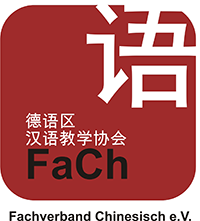美国的中文教师进修
EPDA 中文师资讲习班为例
Autor/innen
After 1960 the interest in Chinese language increased greatly in American colleges, high schools, and elementary schools. Colleges received federal government grants to develop their language departments, and many established centers for Chinese and Asian studies. Such large universities as Yale trained their own newly hired instructors in teaching Chinese, but many college, high school, and elementary teachers had nowhere to receive training. In 1968 and 1969 the federal government provided Education Professions Development Act grants to universities to prepare high school teachers to teach Chinese language and culture. One of these was an intensive seven-week summer program at Seton Hall University that included courses in Chines language, linguistics, teaching methods, and culture.
Participants were both native and non-native speakers of Chinese and had vastly different competencies in the language, in teaching skills, and in knowledge of Chinese culture. This posed a major problem. It was solved, in part, by dividing students into small groups. Another problem was the disparity in textbooks and other materials that the participants used in their schools. The staff developed special materials that all could use. One of the most valuable tools for the program was the videotaping of demonstration lessons. Participants planned and presented 30-minute lessons to high school students and then tested them. The lessons were taped and the participants received critiques as they viewed the videotapes.
Much of the program´s success came from the carefully structured curriculum and the expertise of the faculty. For example, in the linguistics course, participants learned basic concepts and how to apply linguistic principles in teaching Chinese. In the Chinese literary course, participants read contemporary materials and had lectures on recent literary reforms and the outlook for the future. Part of the culture course was lectures on how painting, architecture, costumes, and other art forms reveal traditional Chinese thought.
Both groups of participants made great progress. Native speakers improved considerably in teaching methods and in preparing supplemental teaching and test materials. Non-native speakers made improvements in these areas also, but their biggest gains were in oral competency and knowledge of the culture. Evaluations from the participants, faculty, and observers verified the program´s achievements.

Dieses Werk steht unter der Lizenz Creative Commons Namensnennung - Weitergabe unter gleichen Bedingungen 4.0 International.

Dieses Werk steht unter der Lizenz Creative Commons Namensnennung - Weitergabe unter gleichen Bedingungen 4.0 International.







